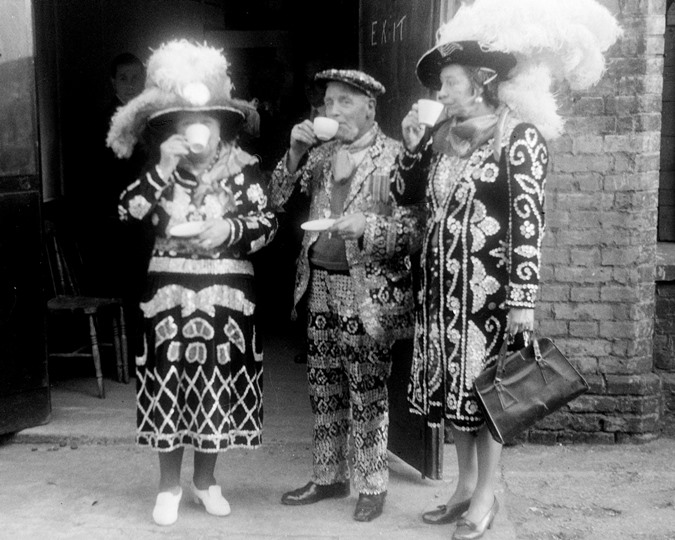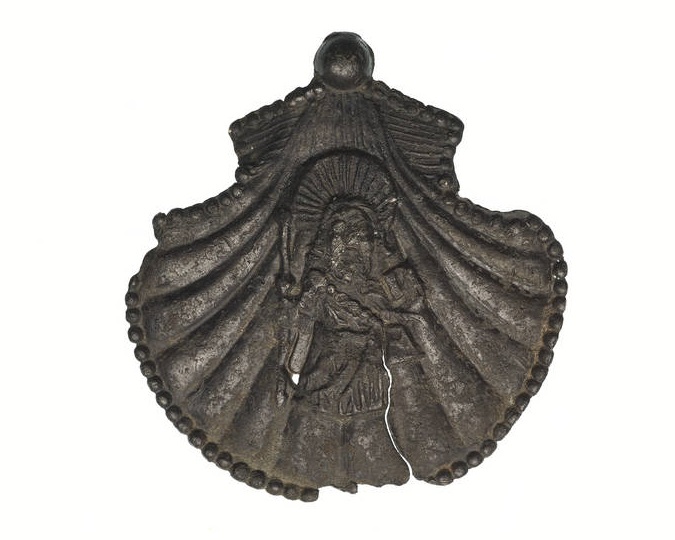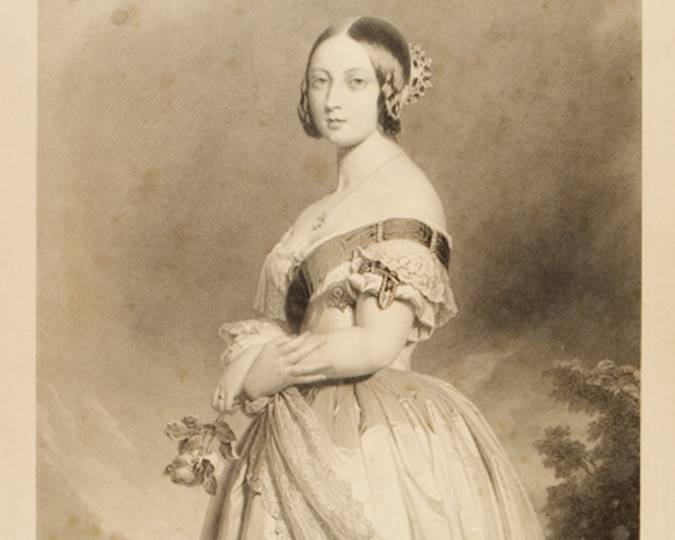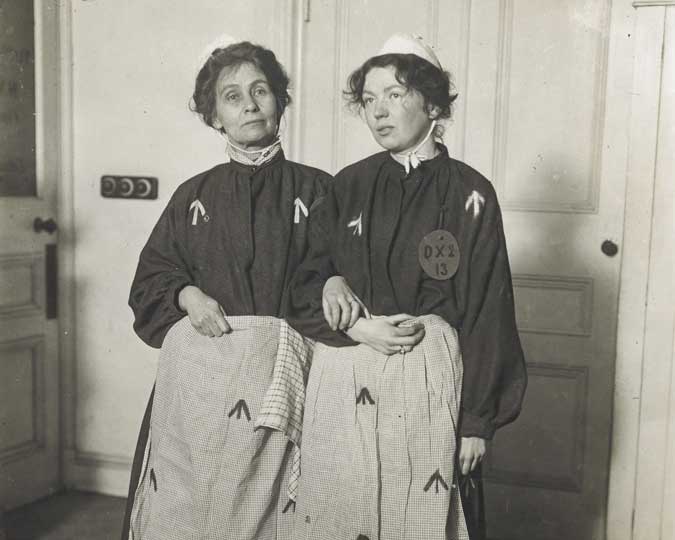There are some particularly fragile objects in our Suffragette collections. Paper Conservator Rose Briskman takes us on a virtual visit to the galleries, and discovers that incarcerated Suffragettes were resourceful as well as heroic.
Walking around a familiar museum can be similar to visiting an old friend. It is reassuring to go over old stories and with each visit you might discover something new, perhaps related to what is going on in your own life at the time. The physicality of ephemera, once held in the hand of someone from another generation, and not meant to last, is deeply moving and can soothe the heart.
In the Museum of London People’s City gallery (previously at London Wall), there was a display area devoted to the suffragettes’ struggle to gain the vote for women. I was involved in preparing some of the objects in this display which opened to the public in 2010.
I love the set of playing cards, made by the suffragette Kitty Marshall, for games of patience while serving time in Holloway Gaol in 1910. She found 4 postcards inside a prison library book and cut them up into small squares. She made black ink from a stick and red ink from another library book. One of the ways she kept her activity secret was to fill her cell peephole with a plug of pulp - made from toilet paper and a little milk.

Prison Diary by Florence Hull
The Prison Diary by Florence Hull was written secretly to avoid censorship during her imprisonment in Holloway in 1913. 50.82/1232
But of particular interest to me are the diaries, letters and sketchbooks which were written on toilet paper, passed between incarcerated suffragettes, and eventually smuggled out of the prison building.
They take a while to comprehend at first. They appear to be small, brown, unattractive pieces of paper which you could easily miss, but once you stop and understand the miracle of their survival, the story that they communicate stays with you. Our social history curator, Beverley Cook told me that for her “they represent the spirit of comradeship that enabled imprisoned Suffragettes to endure prison conditions, hunger strike and force feeding”.
These fragile historic items were perhaps not intended to be kept, but now that they are on display they have the power to transport you to another person’s world.

Writing on modern toilet paper
Modern toilet paper is less suited to blunt pencil communication.
As a paper conservator, sensitive items which are deteriorating due to long term exposure are concerning, especially when you are part of the team who put them on display. Recently when checking the suffragette displays in our People’s City Gallery, I looked afresh at the toilet paper prison diary and sketch book by suffragette Florence Hull. I was concerned that the top page of the stack is seen to be darker than the page beneath due to exposure to light and air. This object has been on display in the Museum of London galleries for almost 20 years; first in an area called World City and then moved to the People’s City gallery.
It is such a fragile item but one which deserves to be seen. With the panic buying of toilet paper in the run up to the COVID19 lockdown of March 2020, this everyday material was being talked and joked about in virtual and real spheres all the time. Video clips were made showing men paying at counters with sheets of toilet paper instead of cash, and joke presents of toilet rolls were being left for colleagues. And here, painfully and delicately, in the museum’s collections, a handwritten diary has survived, written covertly on prison issue toilet paper 100 years ago. The paper appears unlike the toilet paper that we know today.
In the paper historian’s ‘bible’, “Papermaking, the history and technique of an ancient craft” by Dard Hunter, the author refers to a French publication of 1718 as the first written mention of toilet paper. But historically the use of toilet paper goes back much further than this, perhaps even to AD 589 where paper used for ‘toilet purposes’ was mentioned in a Chinese text. It wasn’t until the mid-19th century that toilet paper was being commercially mass-manufactured and sold.
The diaries, sketchbook and letter that are on display show that the toilet paper of the early-20th century was very different to what we now use. It was only in the mid-20th century that toilet paper became softer, two ply and splinter free. That last quality doesn’t bear thinking about for too long!

Note written on prison toilet paper from Kitty Marion
Note written on prison toilet paper from Kitty Marion to another imprisoned suffragette, containing a lock of her own hair. 2003.46/5
The act of writing on a couple of sheets of my own toilet paper has filled me with optimism because the Holloway issue toilet paper is very different in quality and finish. When the Covid-19 lockdown is over I look forward to fully assessing and conserving these hugely significant objects. I will be testing out methods of washing, perhaps using the suction table or placing it on a wet blotter so that the paper can be cleaned with support, and the words made legible once again.
The suffragettes went to violent lengths and were imprisoned because they believed their cause was just; something which society on the whole now generally agrees with. They must all have reacted in different ways to the experience of being locked up, and the documents which they smuggled out are evidence not only of their worries but also the ingenious ways they found to distract themselves. One example is Kitty Marion’s very touching letter to a fellow inmate, also written on toilet paper. In the letter she expressed concern that her hair was falling out, and attached a lock of her own red hair. It can also be viewed on Collections Online.
Before I was employed by the Museum of London I trained and worked as a fine art conservator, treating quite different types of objects. When I came for my interview I was asked how I would manage working on the bus tickets, food packets, and other pieces of everyday ephemera in the Museum of London collections. I naively answered that I was interested in caring for the objects as material things and that I was not concerned with their worth. Now I know that this city’s social history collections are invaluable treasures. Sometimes seemingly insignificant sheets of scribbled notes tell extraordinary human stories, which are certainly worth preserving, sharing, and passing on.
Want to learn more? Visit our Collections Online to see more Suffragette objects, including Florence Hull’s toilet paper sketchbook of ‘Drawings of life in Holloway Gaol’.












